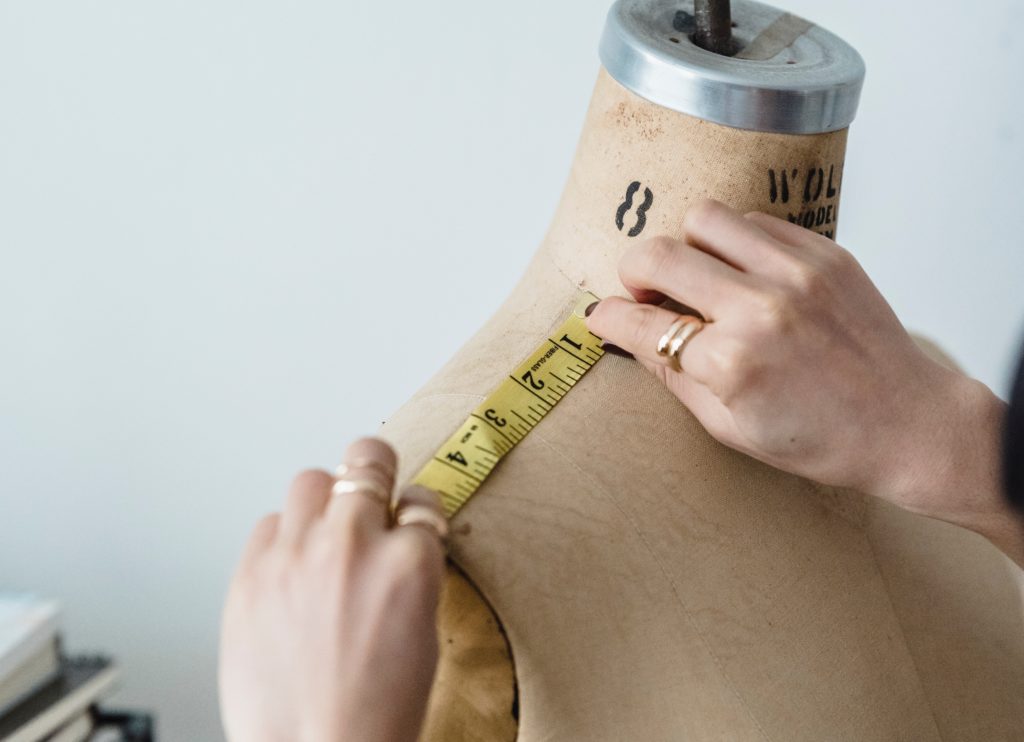
Humans crave uniqueness.
Social scientists, Jonah Berge and Baba Shiv, call it our “drive for distinctiveness.” Our uniqueness makes us stand out, differentiates ourselves, perhaps gets us that job or impresses that potential partner.
And yet, in a world of mass production and cookie cutter fashion, product uniqueness can be hard to come by. After centuries of custom-made goods, created by local merchants and makers, we’ve lost the art of uniqueness in favor of mass consumption.
Bespoke goods seek to change that.
Read on to learn more about bespoke, its history, why it matters, and how to incorporate bespoke back into your daily life.
What Is Bespoke?
According to Merriam Webster, bespoke originated in Old English as a derivative of ‘bespeak,’ which means “to speak,” “to complain,” or “to accuse.” Most commonly, the word bespoke was used in relation to suits, as a word indicating that something was tailored or custom-made for a specific person.
The bespoke suit craze began in 12th and 14th century Europe, when clothes were tailored to appear tighter and shorter to better contour the shape of the human body. Master tailor shops blossomed in 19th century London, where bespoke tailors lined the streets of the historic West End. To this day, Savile Row maintains the bespoke legacy, creating some of the finest custom suits in the modern day era with each suit taking a minimum of 50 hours to perfect.
Today, Merriam Webster defines bespoke as “custom-made” or “dealing in or producing custom-made articles.”
The Human Connection with Bespoke
While “bespoke” may seem bougie, a marketplace that’s not bespoke is relatively new.
Mass production of goods did not start until the industrial revolution and the rise of factories, assembly lines, sewing machines, and inventions used to create what hands once built. Up until the 18th century, nearly everything was handmade, with easy access to design items specifically to your wants and needs. It was common to work with woodworkers for furniture, sew one’s own clothing, and create goods that specifically aligned with one’s unique taste and preference.
If anything, bespoke is merely a return to our roots—to our desire to look at something and claim it as ours.
Bespoke, 22nd Century Style
In the 22nd century, however, the sentiments of ‘bespoke’ have taken a negative turn.
A New York Times article not long ago quipped that bespoke has “devolved from a unique experience to simply a synonym for another catchword of the day: artisanal.”
The article goes on to describe bespoke as an “authenticity hoax” and an automatic way “to add $50 to the price.”
And to an extent, it’s true. Bespoke is now slapped haphazardly onto any expensive product with little thought or consideration to the word. Satire director, Paul Riccio, created a video poking fun at the term, promoting ‘bespoke water’ as a satire on the modern-day bespoke movement.
As Riccio and NYT are quick to point out, the word “bespoke” may have lost its meaning. Still, that doesn’t change the fact that the heart of bespoke is still very much alive.
Etsy – A Home for the Artisanal, the Artistic & the Bespoke
If anyone challenges the relevancy of true bespoke, one need not look further than the success of Etsy to prove otherwise. Etsy is a place of makers and creators—with whole sections of custom-made jewelry, commissionable art, and tailored clothing.
On Etsy, you can commission a sketch of your home, create your unique fragrance, or order a customized suit. Etsy thrives on uniqueness and that uniqueness is what sets it apart from the mass production of Amazon marketplace and other mass product giants. While a single corporation, Etsy is made up of single sellers looking to infuse their creativity into the world, creating products made predominantly by hand.
Why It Matters
While skeptics are quick to point out “bespoke” as a mere buzzword and consumer moment, there’s validity to creating a bespoke wardrobe and life.
Bespoke offers the perfect fit in clothing which, for women’s bodies ranging in size, is a huge advantage. Custom clothing also guarantees quality materials and saves time, no longer needing to hunt for the item that already exists in your mind.
More importantly, bespoke represents a growing aspect in the slow fashion movement. Given the intentionality of each piece, made-to-order fashion reduces waste, surplus, and the ongoing changes of fast fashion trends. They’re investment pieces meant to outlast the $5 Shein crop top and Forever 21 dress otherwise in your wardrobe.
How To Incorporate “Bespoke” Into Your Life
While custom-order bespoke may not be within your budget, anyone can start to incorporate “bespoke” into their life with a bit of DIY. Instead of buying that piece of artwork at TJ Maxx, try making it yourself. Take up a new hobby with sewing or crocheting, or learn how to upcycle vintage clothing in exciting, new creations.
***
When removing the modern-day label of the word, taking a genuine bespoke-approach can lead to a greater sense of individuality, ownership, and sustainability. It’s life made intentional, with thoughtfulness behind each and every piece.
Curate the wardrobe, home, and life of your dream with a touch of originality and a whole lot of bespoke.
Get more like this—Sign up for our daily inspirational newsletter for exclusive content!
__
Photo: Michael Burrows via Pexels




